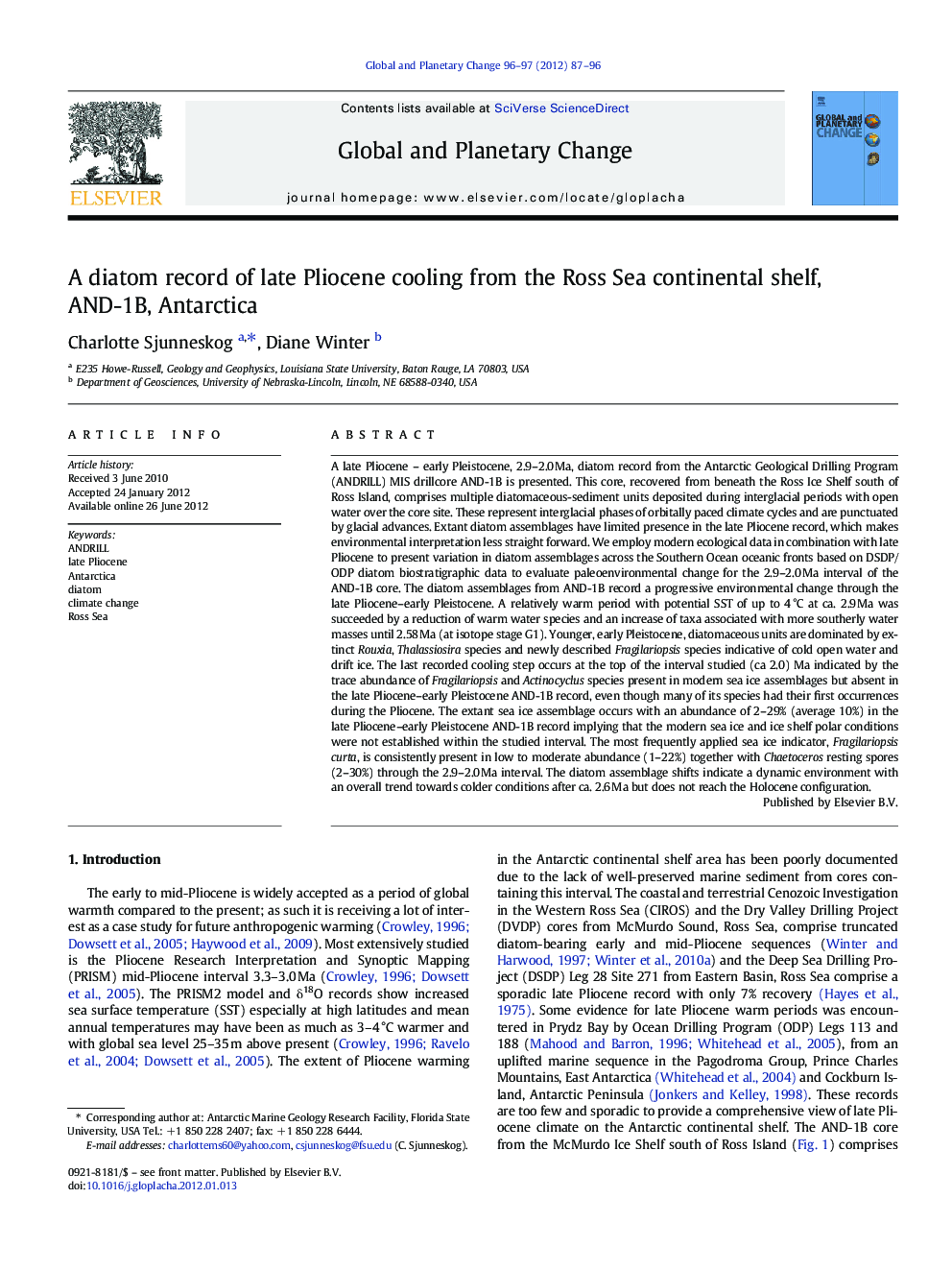| کد مقاله | کد نشریه | سال انتشار | مقاله انگلیسی | نسخه تمام متن |
|---|---|---|---|---|
| 4463691 | 1621683 | 2012 | 10 صفحه PDF | دانلود رایگان |

A late Pliocene – early Pleistocene, 2.9–2.0 Ma, diatom record from the Antarctic Geological Drilling Program (ANDRILL) MIS drillcore AND-1B is presented. This core, recovered from beneath the Ross Ice Shelf south of Ross Island, comprises multiple diatomaceous-sediment units deposited during interglacial periods with open water over the core site. These represent interglacial phases of orbitally paced climate cycles and are punctuated by glacial advances. Extant diatom assemblages have limited presence in the late Pliocene record, which makes environmental interpretation less straight forward. We employ modern ecological data in combination with late Pliocene to present variation in diatom assemblages across the Southern Ocean oceanic fronts based on DSDP/ODP diatom biostratigraphic data to evaluate paleoenvironmental change for the 2.9–2.0 Ma interval of the AND-1B core. The diatom assemblages from AND-1B record a progressive environmental change through the late Pliocene–early Pleistocene. A relatively warm period with potential SST of up to 4 °C at ca. 2.9 Ma was succeeded by a reduction of warm water species and an increase of taxa associated with more southerly water masses until 2.58 Ma (at isotope stage G1). Younger, early Pleistocene, diatomaceous units are dominated by extinct Rouxia, Thalassiosira species and newly described Fragilariopsis species indicative of cold open water and drift ice. The last recorded cooling step occurs at the top of the interval studied (ca 2.0) Ma indicated by the trace abundance of Fragilariopsis and Actinocyclus species present in modern sea ice assemblages but absent in the late Pliocene–early Pleistocene AND-1B record, even though many of its species had their first occurrences during the Pliocene. The extant sea ice assemblage occurs with an abundance of 2–29% (average 10%) in the late Pliocene–early Pleistocene AND-1B record implying that the modern sea ice and ice shelf polar conditions were not established within the studied interval. The most frequently applied sea ice indicator, Fragilariopsis curta, is consistently present in low to moderate abundance (1–22%) together with Chaetoceros resting spores (2–30%) through the 2.9–2.0 Ma interval. The diatom assemblage shifts indicate a dynamic environment with an overall trend towards colder conditions after ca. 2.6 Ma but does not reach the Holocene configuration.
► Pliocene environment is inferred by modern and paleo geographical distribution of diatoms.
► SSTs of up to 4 °C are inferred prior to 2.9 Ma.
► Late Pliocene-Early Pleistocene underwent a stepwise cooling.
► Modern sea ice assemblage is not established until after 2.0 Ma.
Journal: Global and Planetary Change - Volumes 96–97, October–November 2012, Pages 87–96